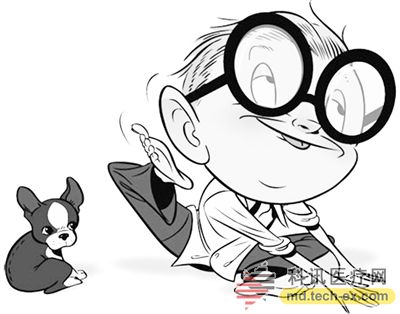Release date: 2014-11-11
For the itching of the skin, many people have had such an experience: the more itching, the more itchy, the more it wants to scratch. But few people have thought about why this is happening. A few days ago, a study by scientists at the University of Washington in the United States finally revealed the mystery.

The neurologist tells you:
For the itching of the skin, many people have had such an experience: the more itching, the more itchy, the more it wants to scratch. But few people have thought about why this is happening. A few days ago, a study by scientists at the University of Washington in the United States finally revealed the mystery.
Itching
For a century, many scientists believe that itching and pain are the same physiological reaction, but the itch is weaker and the pain is stronger than the itch. But the theory has never been able to explain the different feelings and physical reactions of the human body when these two phenomena appear. The two scientists who supported and opposed the idea conducted a large number of experiments to prove their views, but still could not convince each other. Until 2007 and 2009, the University of Washington neuroscientist Chen Zhoufeng wrote in Nature and Science that he found the itch gene in the central nervous system, distinguishing itching from pain, which is the end of this long-running debate. .
But soon new problems have emerged. Scientists have known for more than a decade ago that people feel itchy when they feel itchy. This is because the pain caused by scratching the skin is transmitted to the brain through the nerve cells in the spinal cord, which interferes with the itching signal and temporarily suppresses the itching sensation. That is, the pain masks the itch. This statement is a good explanation of why people tickle, but it does not tell us why it is more and more itchy.
Where does the itch come from?
In order to figure out the problem. Chen Zhoufeng's team analyzed the whole process and found that when the brain caused pain due to scratching caused by itching, the brain responded immediately, allowing the body to produce a neurotransmitter called serotonin to control the pain. But when serotonin diffuses into the spinal cord, the chemical acts on nerve cells while suppressing pain, making itching more intense.
"Scientists discovered the role of serotonin in controlling pain more than a decade ago, but it is the first time to associate it with itching," said Chen Zhoufeng.
To prove this idea, Chen Zhoufeng's team developed a mouse that could not produce serotonin by gene knockout technology. As they envisioned, these genetically engineered mice did not produce a noticeable itching sensation like normal mice after being injected with substances that usually cause itching of the skin; and after injection of serotonin, these mice developed itching again. And scratching the phenomenon. This is in line with the idea that itching and pain signals are transmitted through different but related pathways.
How to stop itching
Since serotonin is the main cause of the more itching, why not delete it directly. Chen Zhoufeng said that although mice that remove the serotonin gene are less sensitive to itching, this does not mean that pruritus can be treated by preventing serotonin release. Serotonin plays an important role in the human body, participating in many processes such as development, aging, bone metabolism, etc., affecting people's appetite, sleep, sex and mood. Drugs such as Prozac, Zoloft, and Paroxetine are controlled by increasing serotonin levels. Blocking serotonin can have an unpredictable effect on the entire body, and the body will therefore lose a natural way to control pain. Therefore, we must find another way.
The itch-related gene discovered by the Chen Zhoufeng team is called the GRPR gene and is the first itch gene found in the central nervous system. Although nerve cells expressing the GRPR gene are not all itch cells, these cells may also express pain-related genes. However, in the spinal cord, neurons expressing the GRPR gene are only involved in the conduction of itching, which is the relay station for the transmission of the itching signal between the brain and the skin.
After clarifying this point, Chen Yufeng team conducted experiments again with serotonin. In the new experiment, the researchers injected a itch-inducing substance into a complex that activates a variety of different serotonin receptors. These receptors are then screened one by one. Eventually, they discovered that a receptor called 5HT1A is a key factor in the activation of GRPR neurons. In order to verify this conclusion, the team of Chen Zhoufeng once again injected a drug that blocked the 5HT1A receptor into the rats. It was found that the itching symptoms of the mice were significantly relieved, and basically it would not scratch after the injection of the itch-causing substance. .
At this point, the Chen Zhoufeng team finally figured out the principle of a vicious circle between pain and itching. First, it scratched because of the feeling of itching, and then caused pain by scratching. Then, the body released serotonin to control the pain due to the pain signal, but these While inhibiting pain, serotonin also activates GRPR neurons through the 5HT1A receptor, making it more intense. A strong itching sensation triggers a new round of scratching and pain, and then cycles back into circulation.
The study provides a new way to break the vicious cycle of itching and scratching, especially for the treatment of psoriasis and various pruritus. Related papers were published in the journal Neuron.
Source: China Science and Technology Network - Technology Daily
Specimen Containers,Medical Urine Container,Standard Stool Container,Pp Urinersal Stool Container
Yancheng Rongtai Labware Co.,Ltd , https://www.shtestlab.com